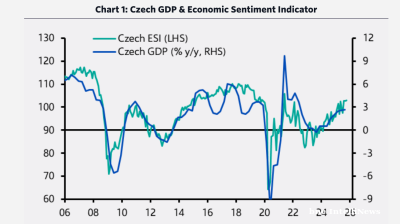With no clear explanation from Moscow, theories have proliferated over how and why more than a dozen Russian drones crossed into Poland on September 10—and what this means for European security.
“There is no satisfactory answer to this right now,” The Bell reported, but there are three primary theories currently under discussion.
The Russian Ministry of Defence, via state-controlled media, denied any intention to strike targets in Poland, stating that “no targets were planned for destruction on Polish territory.”
The ministry also offered to consult with Poland’s military leadership and insisted that the range of the drones used did not exceed 700 km—implying that some of the devices would not have reached their crash sites if launched from Russian territory.
“The Kremlin has essentially not commented on the incident,” The Bell noted, underscoring the lack of official narrative beyond the defence ministry’s remarks.
An alternative theory, circulated by Russian pro-war military bloggers (milbloggers), suggest that the incursion could have been a Ukrainian false-flag operation. As bne IntelliNews reported, more than one-in-three Poles believe the drones originated in Ukraine, not Russia.
“In theory, it is possible that Ukrainian special services could have assembled airworthy Gerberas from the thousands that fell on its territory,” The Bell said, though it added that this scenario was unlikely.
“The Ukrainian leadership is unlikely to anger its allies by repeating the plot of the sabotage on the Nord Stream explosions.”
A third version follows from statements from Minsk. Belarusian officials argue that the drones entered its airspace due to interference from one side’s electronic warfare systems and were subsequently shot down by Belarusian air defences.
“Some Western experts do not rule out the possibility of successful electronic warfare against relatively simple drones,” The Bell wrote.
Yet the interpretation gaining traction among Nato members is that Moscow is testing the alliance’s eastern flank. Polish Foreign Minister Radoslaw Sikorski has accused Russia of deliberate aggression, claiming the drones were “deliberately aimed” at Polish territory. “Russian aggression has gone beyond Ukraine,” Sikorski said.
This reading is echoed by Russian milbloggers, some of whom suggest the drone incident may have been a “stress test” of Nato air defences. “This version is given weight by the fact that all the drones discovered in Poland turned out to be pure air defence decoys without combat capabilities or self-destructors,” The Bell reported.
Tensions may escalate further as Belarus and Russia prepares to launch their annual Zapad large scale military exercises on September 12, their first joint strategic military exercises with Russia since the start of the war.
“[Ukrainian President Volodymyr] Zelenskiy did not rule out that the attack was part of a "training mission".
If it was a test, then Poland failed, the FT admits. The slow-moving drones flew over half the country before they were challenged. F-35 fighters from the Netherlands had to be scrambled as well to intercept them. The Polish air force failed to bring all the drones down on its own.
Opinion

COMMENT: Czechia economy powering ahead, Hungary’s economy stalls
Early third-quarter GDP figures from Central Europe point to a growing divergence between the region’s two largest economies outside Poland, with Czechia accelerating its recovery while Hungary continues to struggle.

COMMENT: EU's LNG import ban won’t break Russia, but it will render the sector’s further growth fiendishly hard
The European Union’s nineteenth sanctions package against Russia marks a pivotal escalation in the bloc’s energy strategy, which will impose a comprehensive ban on Russian LNG imports beginning January 1, 2027.

Western Balkan countries become emerging players in Europe’s defence efforts
The Western Balkans could play an increasingly important role in strengthening Europe’s security architecture, says a new report from the Carnegie Europe think-tank.

COMMENT: Sanctions on Rosneft and Lukoil are symbolic and won’t stop its oil exports
The Trump administration’s sanctions on Russian oil giants Rosneft and Lukoil, announced on October 22, may appear decisive at first glance, but they are not going to make a material difference to Russia’s export of oil, says Sergey Vakulenko.




